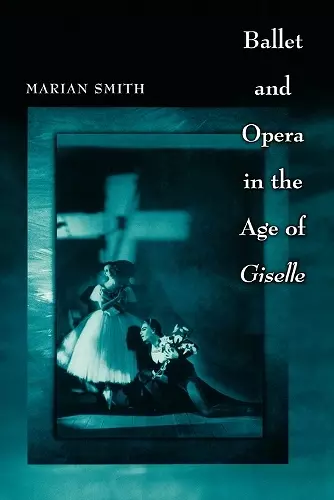Ballet and Opera in the Age of Giselle
Format:Paperback
Publisher:Princeton University Press
Published:1st Apr '11
Currently unavailable, and unfortunately no date known when it will be back

Now that opera studies have finally recognized the importance of the visual, a book that reveals the web of reciprocities that existed between ballet and opera during a particularly lively period in the history of both will undoubtedly find a wide readership. The information, presented here through judicious examples chosen from both repertoires, is utterly fascinating and brand new. -- Rebecca Harris-Warrick, Cornell University An informative and enjoyable read for both scholars and nonspecialists, whether in dance or in opera. Marian Smith's views are refreshingly new and show unknown facets of the Romantic ballet, discussed with admirable accuracy. Works that survived only as exotic or mysterious titles in dance history manuals thus regain their long lost identities and their historical significance. Those who work in the field of dance reconstruction will especially benefit from this book. -- Giannandrea Poesio, University of Surrey
Focusing on the age of Giselle at the Paris Opera (from the 1830s through the 1840s), this book looks at the structural and thematic relationship between ballet and opera. It argues that an understanding of both the genres - and of nineteenth-century theater-going culture in general - may be gained by examining them within the same framework.Marian Smith recaptures a rich period in French musical theater when ballet and opera were intimately connected. Focusing on the age of Giselle at the Paris Opera (from the 1830s through the 1840s), Smith offers an unprecedented look at the structural and thematic relationship between the two genres. She argues that a deeper understanding of both ballet and opera--and of nineteenth-century theater-going culture in general--may be gained by examining them within the same framework instead of following the usual practice of telling their histories separately. This handsomely illustrated book ultimately provides a new portrait of the Opera during a period long celebrated for its box-office successes in both genres. Smith begins by showing how gestures were encoded in the musical language that composers used in ballet and in opera. She moves on to a wide range of topics, including the relationship between the gestures of the singers and the movements of the dancers, and the distinction between dance that represents dancing (entertainment staged within the story of the opera) and dance that represents action. Smith maintains that ballet-pantomime and opera continued to rely on each other well into the nineteenth century, even as they thrived independently. The "divorce" between the two arts occurred little by little, and may be traced through unlikely sources: controversies in the press about the changing nature of ballet-pantomime music, shifting ideas about originality, complaints about the ridiculousness of pantomime, and a little-known rehearsal score for Giselle.
Winner of the 2001 De la Torre Bueno Prize for Most Distinguished Book in Dance Scholarship, Dance Perspectives Foundation (New York) "To readers interested in the evolution of opera and ballet performance practice, Smith's meticulously documented study offers a chance to see many familiar works in a new and surprising light."--M. Lignana Rosenberg, Opera News "Marian Smith's book is a swift and easy read, fully researched, informative, genuinely insightful about her subject. Definitely one for the bookshelf."--David Blewitt, Opera Now
- Winner of Society of Dance History Scholars de la Torre Bueno Prize 2001
ISBN: 9780691146492
Dimensions: unknown
Weight: 454g
288 pages